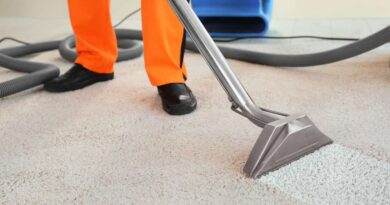A Quick Guide for Checking Electronic Parts
Before using electronic components in a project, even though you have purchased it from your trusted electronic component supplier it is still critical to make sure that they are in good working condition. It’s crucial to have a guide for inspecting electrical equipment because defective or damaged components might cause malfunctions or even dangerous circumstances.
Visual Examination – is the initial phase in the testing of electronic components. To check for damage, look for any evident symptoms like cracks, bent pins, or discoloration. All of these are signs that the component might be acting improperly or be about to fail. Since visual examination enables you to rapidly spot any evident indicators of damage or faults, it is a crucial step in the inspection of electronic parts. During a visual inspection, you should keep an eye out for things like:
- Cracks or breaks: If a part has a crack or break, it may not function properly or could even be dangerous. Cracks or breaks can occur due to impact, overheating, or other types of stress.
- Bent or missing pins: Pins are the connections between a part and the circuit board, and they are crucial for proper functionality. Bent or missing pins can result in poor connections or even short circuits.
- Discoloration: Discoloration can be an indicator of overheating, which can cause damage to the part. Discoloration can also be a sign of corrosion, which can prevent proper connections.
- Deformation: Deformation can occur due to impact or other types of stress. It can cause the part to malfunction or make it difficult to properly connect to the circuit board.
- Dirt or debris: Dirt or debris on or around a part can cause poor connections or even short circuits.
- Rust, corrosion, or other signs of moisture damage: Moisture can cause rust and corrosion on metal parts, which can cause poor connections or even short circuits.
It’s crucial to understand that testing electronic components with a multimeter or other specialized equipment is necessary in addition to visual inspection. It is a quick and simple approach to spot outright damage or flaws. It’s also very important to pay attention to the environment in which the component was kept; if it was exposed to harsh weather, high humidity, or dust, this could be a symptom of a potential problem. To prevent damage, parts should be stored in a controlled environment.
Checking for Proper Connections – Make sure that all pins are securely connected and not bent or broken. If the part is a component that requires soldering, ensure that the connections are clean and secure. Making sure that electronic items are connected correctly to the circuit board and are capable of performing as intended is a crucial stage in the inspection process. When examining for proper connections, there are numerous factors to keep an eye out for:
- Secure connections: Verify that all pins are firmly attached to the circuit board and are not missing or loose. Poor connections or even short circuits can be caused by loose or disconnected pins.
- Broken or bent pins might make it difficult for the component to connect properly and result in a malfunction. Look for any evidence of damage, such as bending or breaking, on every pin.
- Clean connections: If the component needs to be soldered, check to make sure there is no extra solder and that the connections are clean. Short circuits or poor connections can result from too much solder.
- Correct orientation: Verify that the component is positioned properly on the circuit board. For proper functionality, several components—like transistors and diodes—have a required orientation.
- Correct type of connectors: Verify that the connector type is appropriate for the part. If it isn’t, it could result in faulty connections or even cause damage.
- Examine the PCB and connector for any damage; if there is any, it will inhibit appropriate connections and result in a malfunctioning item.
It’s also important to note that some parts, such as integrated circuits (ICs) and connectors, may have multiple pins that need to be checked for proper connections. It’s essential to be thorough and check all pins to ensure proper functionality.
By measuring the capacitance using a multimeter, you can examine the functionality of capacitors. Compare the measured value to the capacitor’s specified value. Applying a voltage to capacitors and measuring the current can also allow you to verify that they are operating properly. A capacitor should have the capacity to store a charge and release it gradually.
For resistors, you can check for proper functionality by measuring the resistance with a multimeter. Compare the measured value to the value specified on the resistor.
For integrated circuits (ICs), such as microcontrollers or memory chips, it can be more difficult to check for proper functionality. In some cases, you may need specialized equipment or knowledge to properly test these components. However, you can still check for obvious signs of damage or poor connections as mentioned above.
It’s also critical to remember that even if an electronic component seems to be working perfectly, certain components, such as batteries, may need to be changed because they have a finite lifespan.
Checking for proper connections is an important step in checking electronic parts because it ensures that the part is properly connected to the circuit board and can function as intended. By making sure that all pins are securely connected, that there are no bent or broken pins, that the connections are clean, that the part is oriented correctly, that the connector type is correct, and that there is no damage on the PCB or connector, you can ensure that your electronic parts are in good working condition before using them in a project.
In conclusion, in order to make sure that your projects function efficiently and safely, testing electronic components is a crucial step. Your electronic components should be in good working order if you visually check them for damage, check connections, and use a multimeter to test for proper performance. Additionally, keep in mind that some parts have a limited lifespan and replace them as needed.




